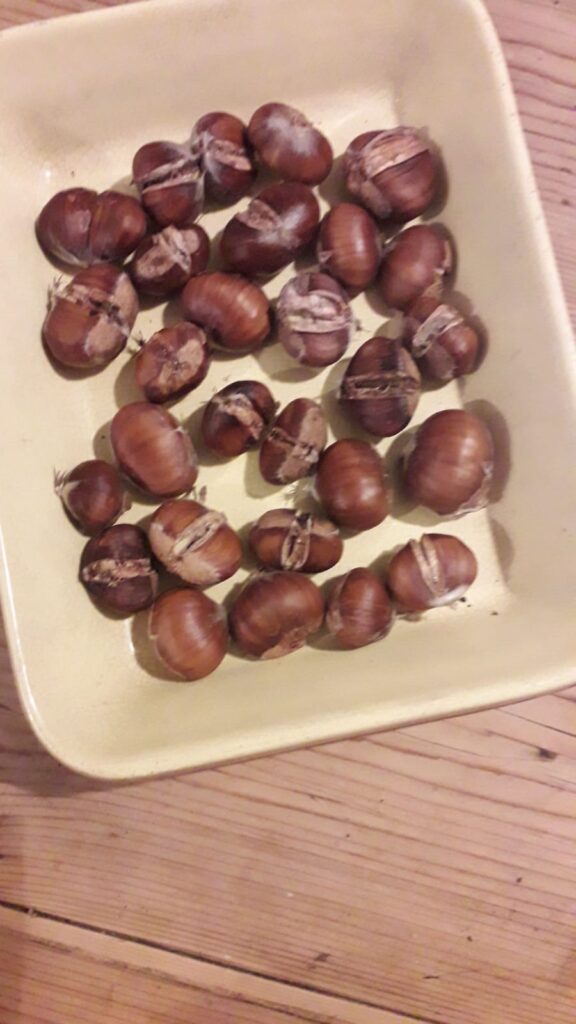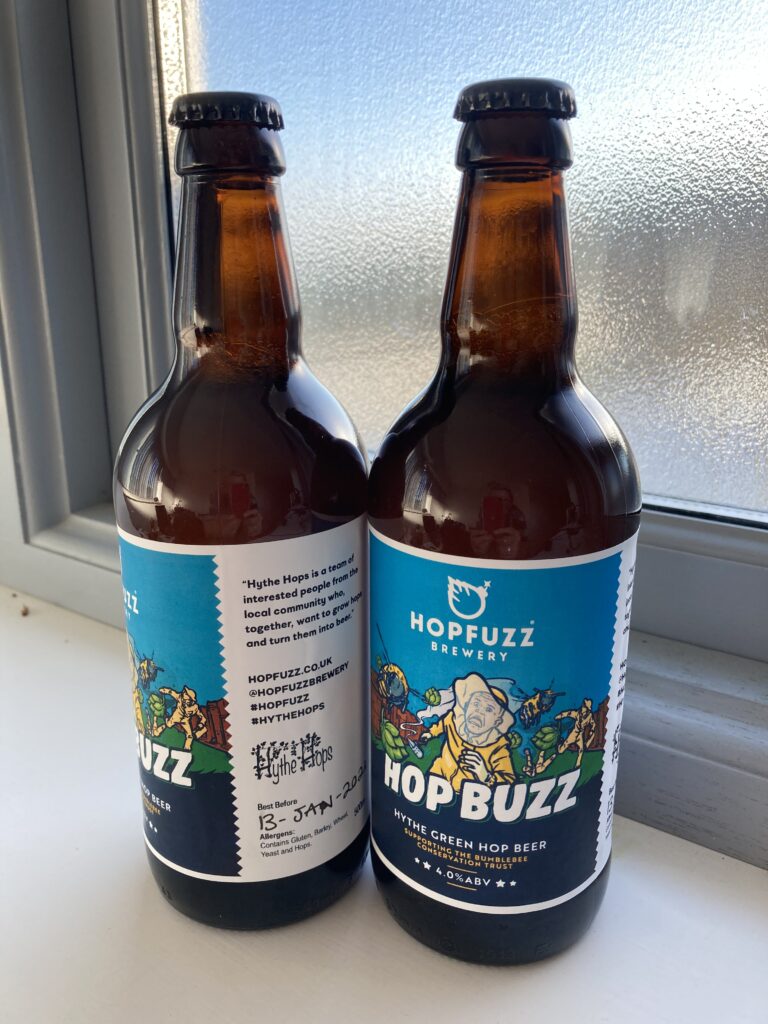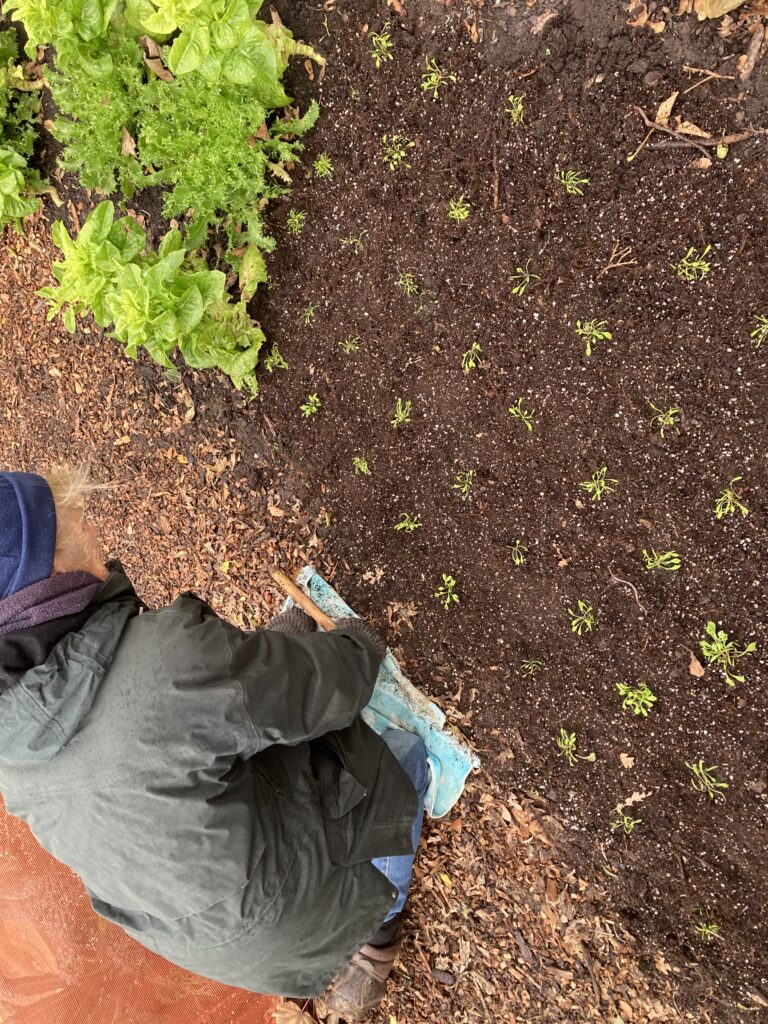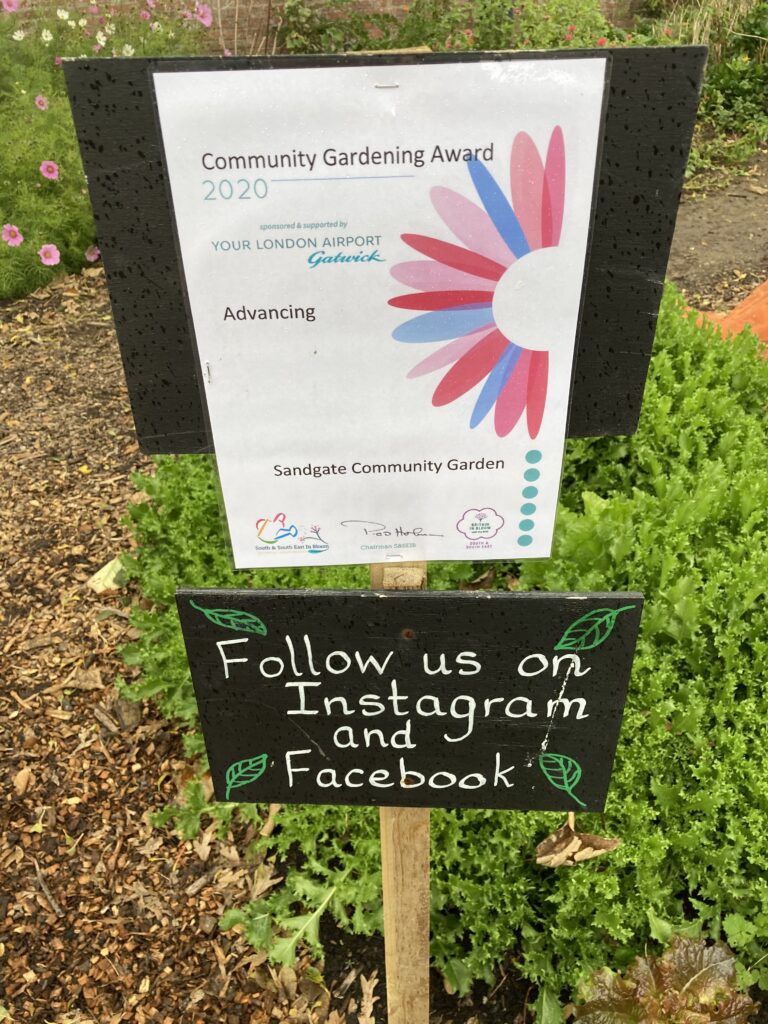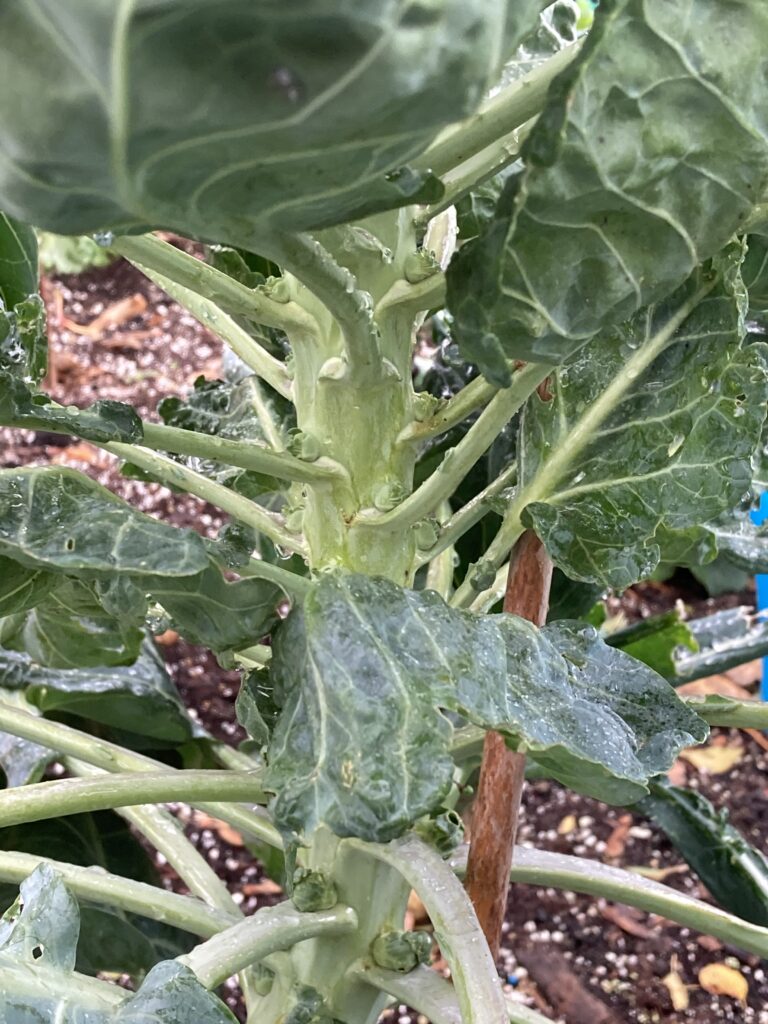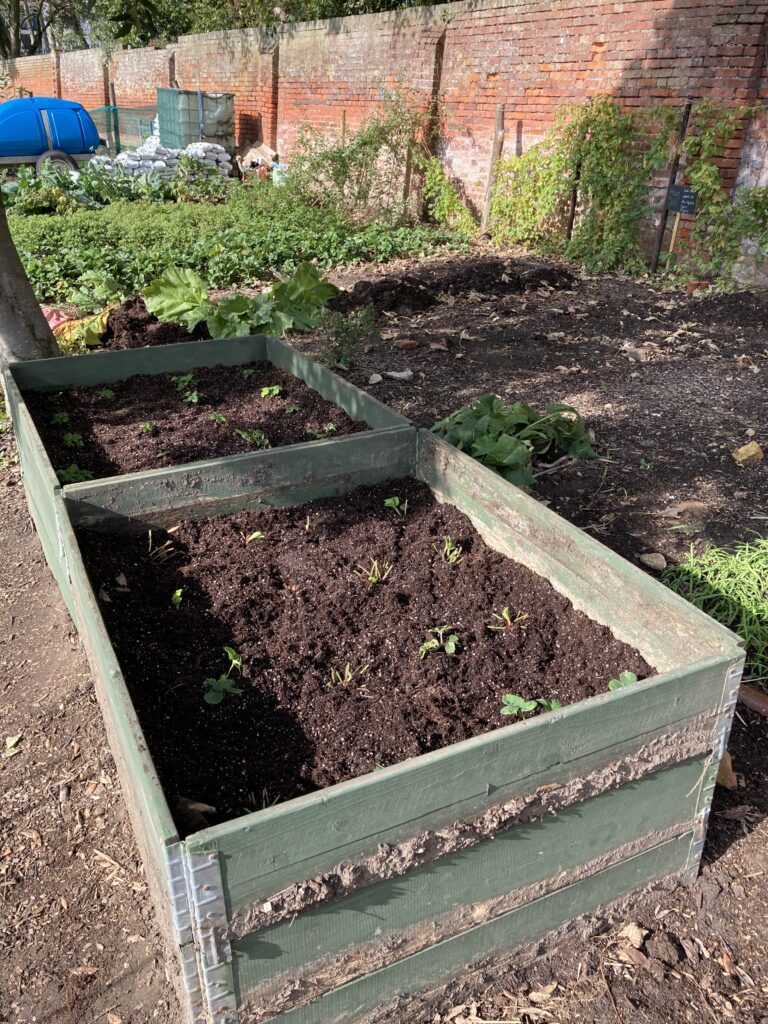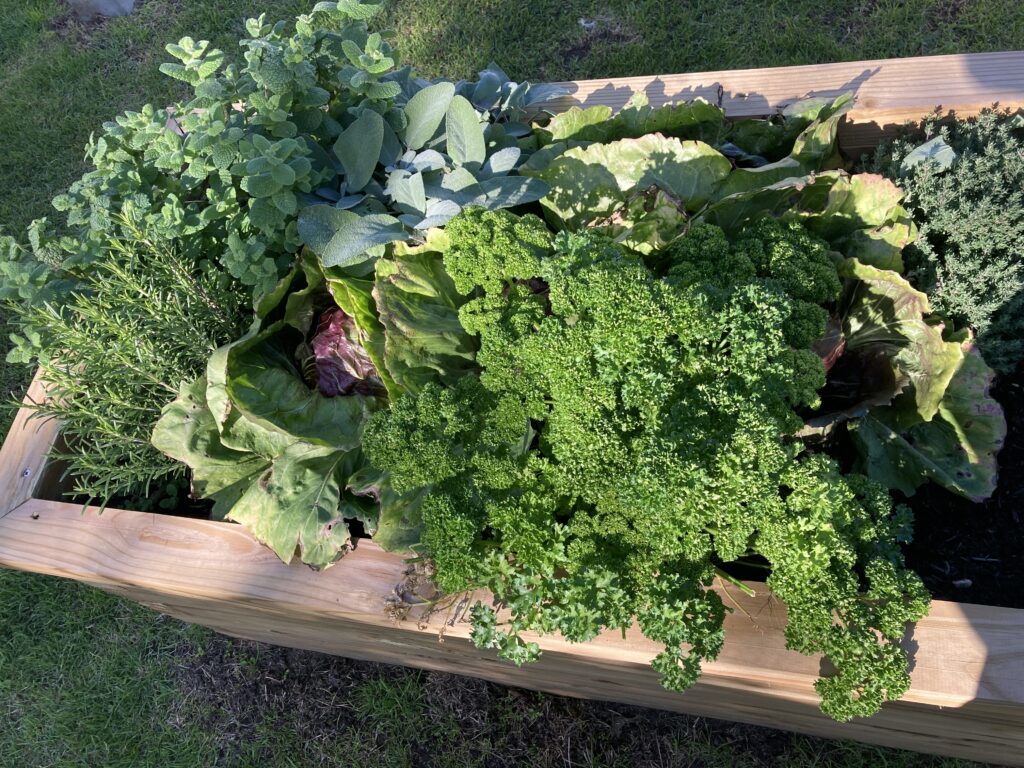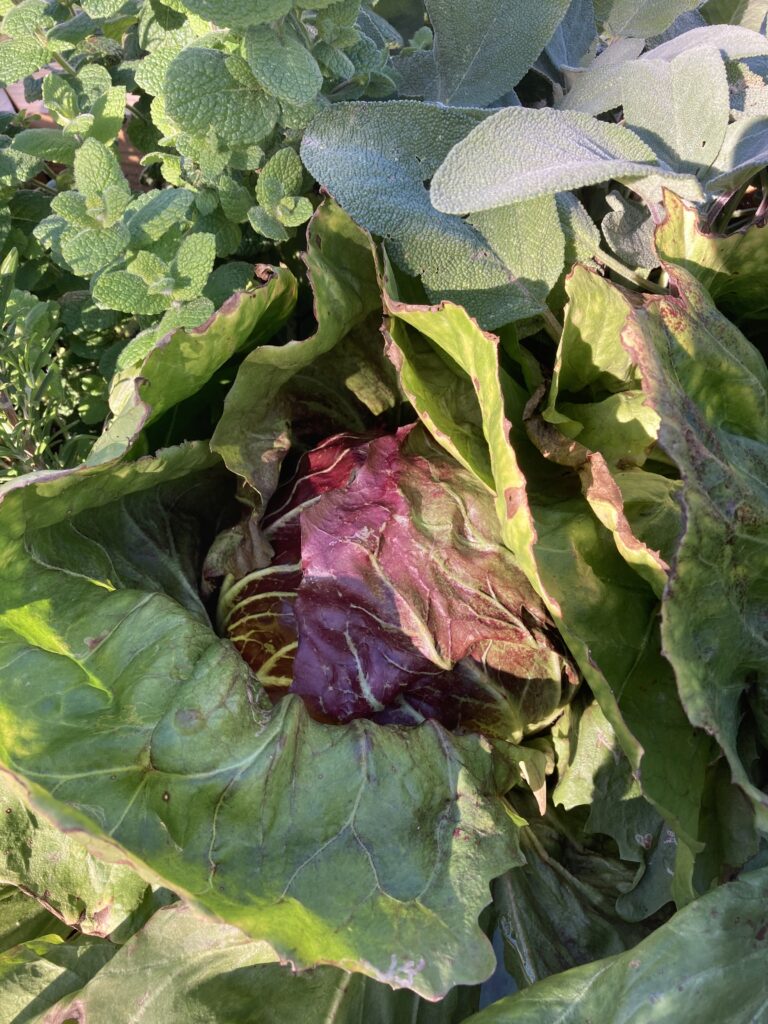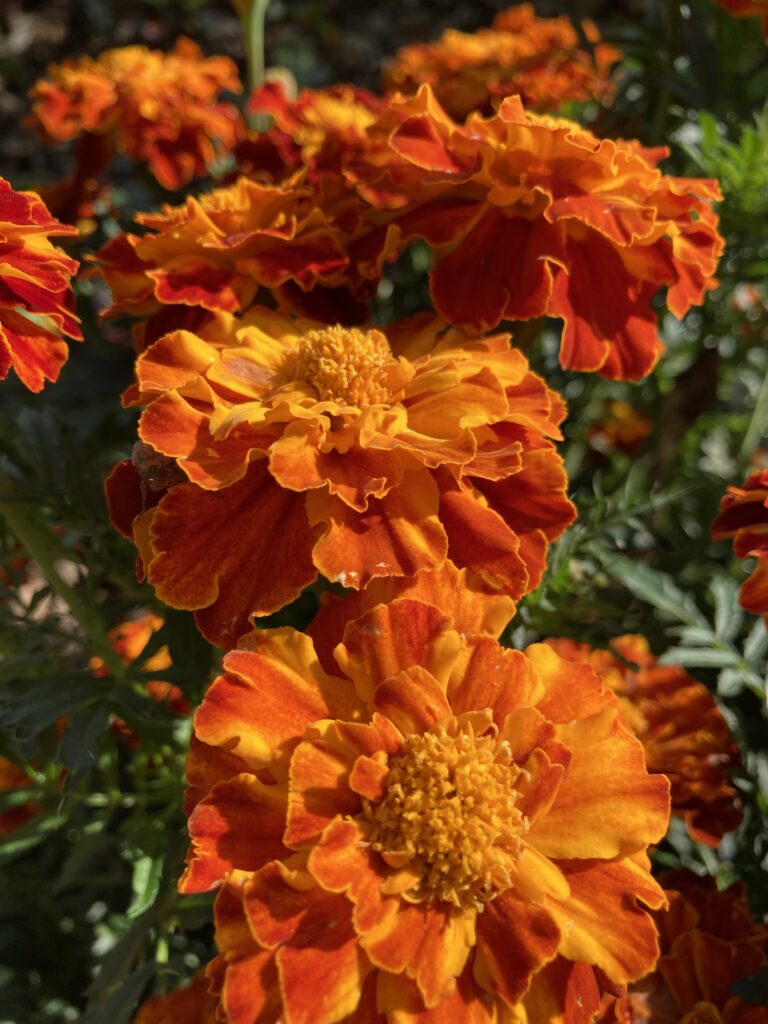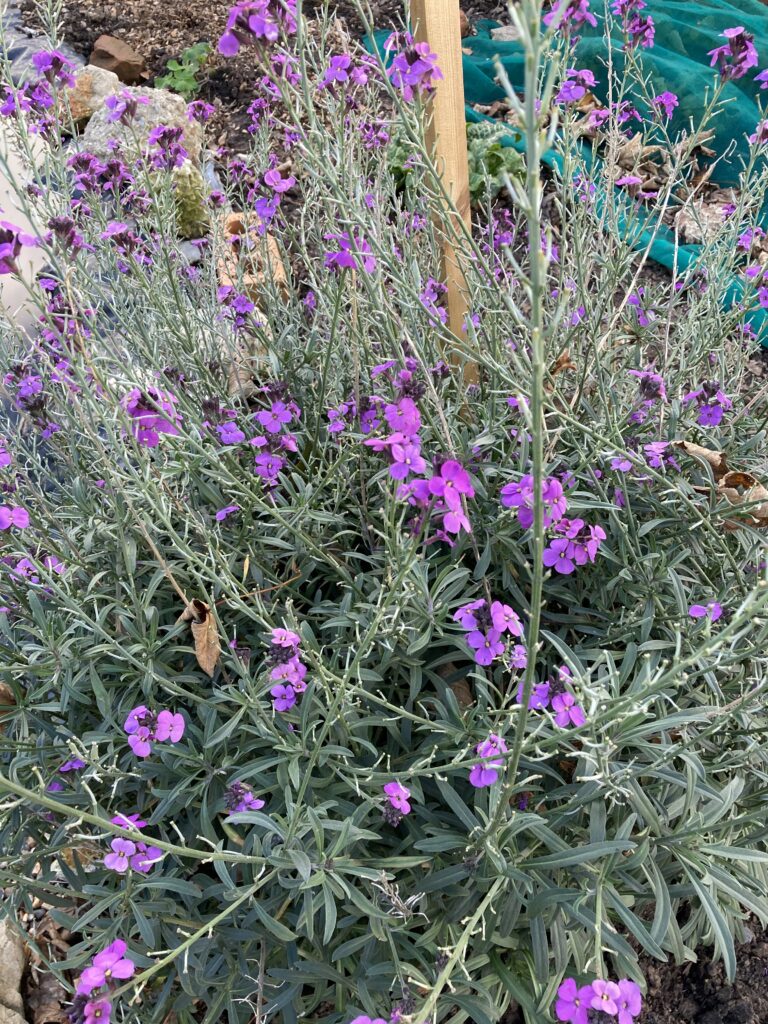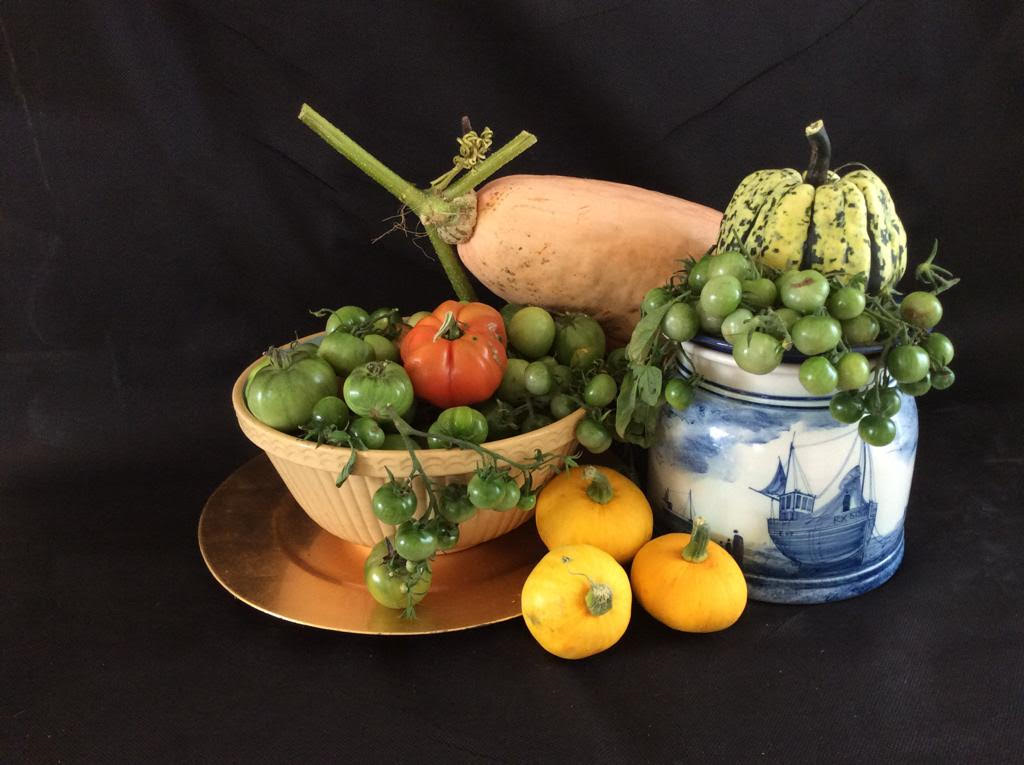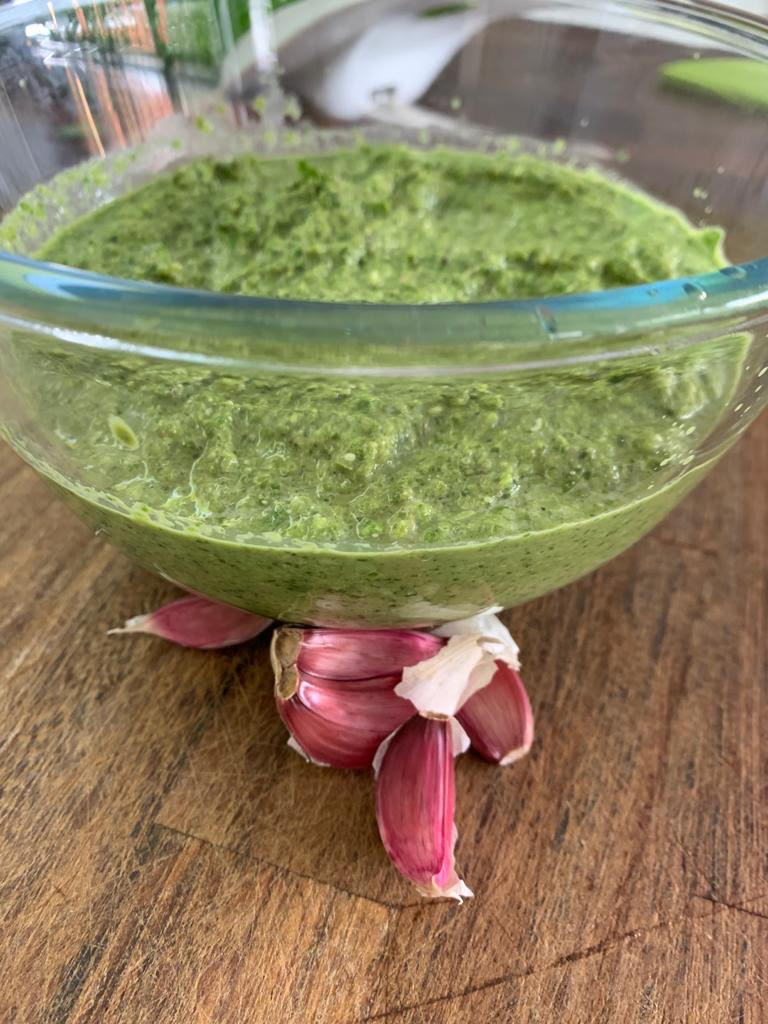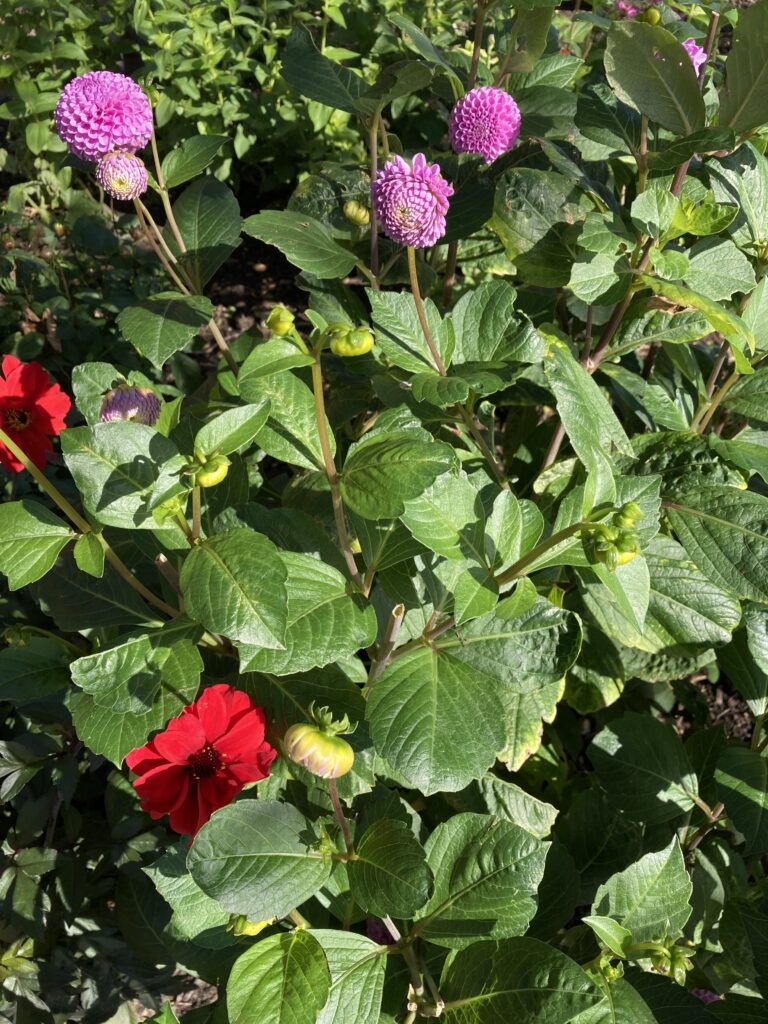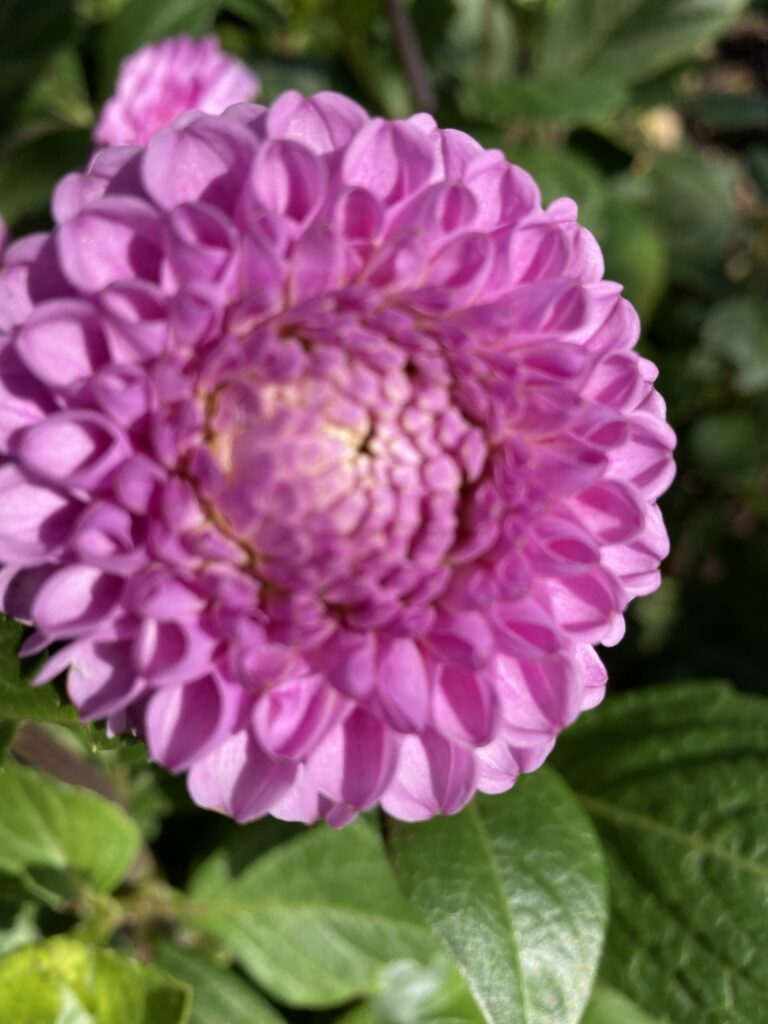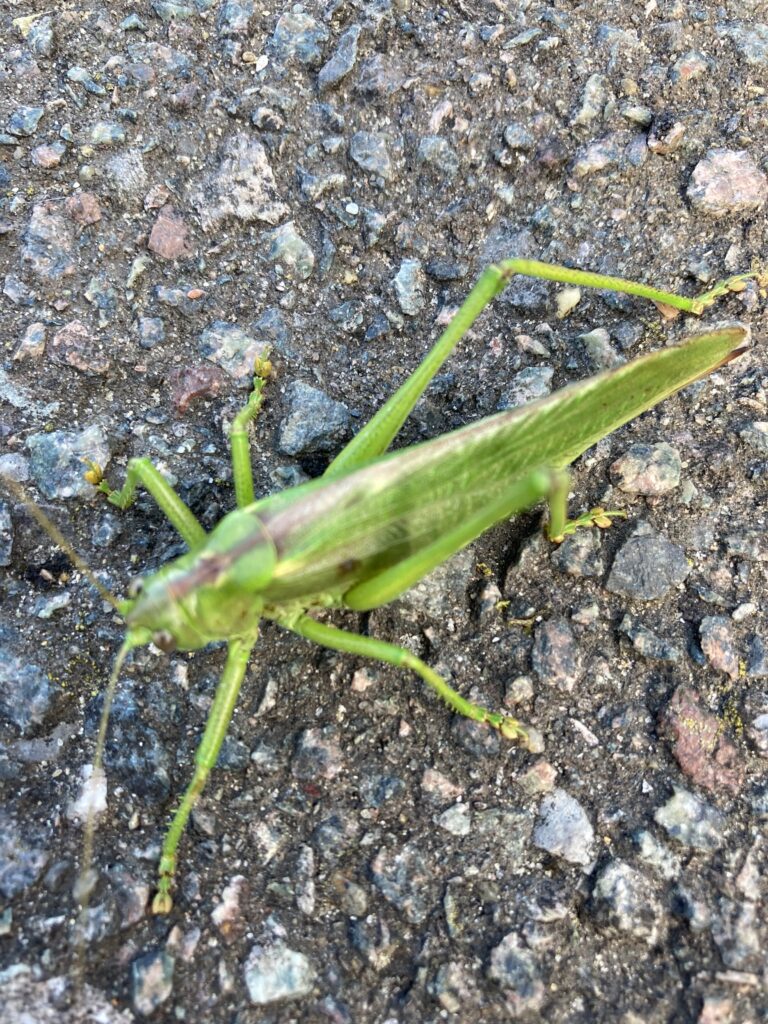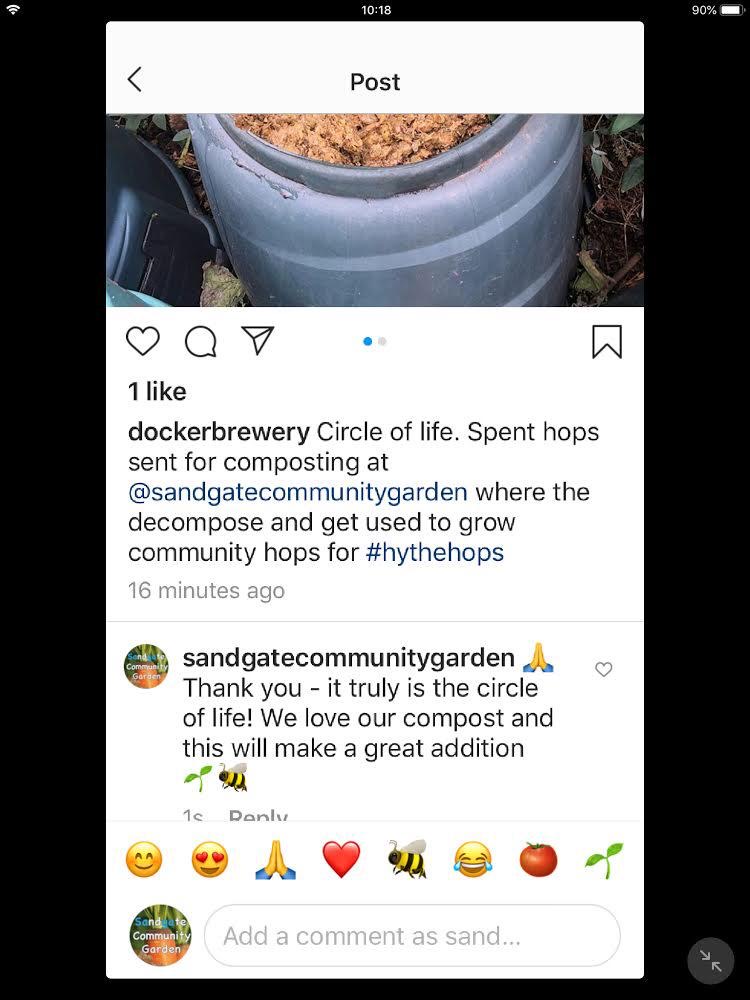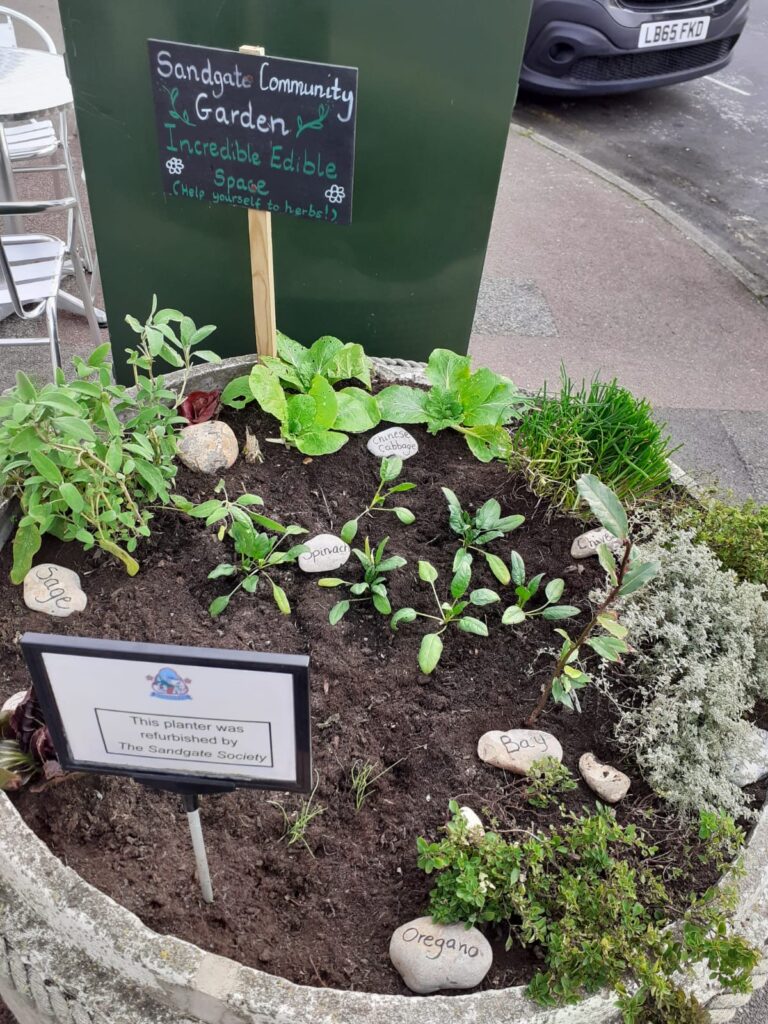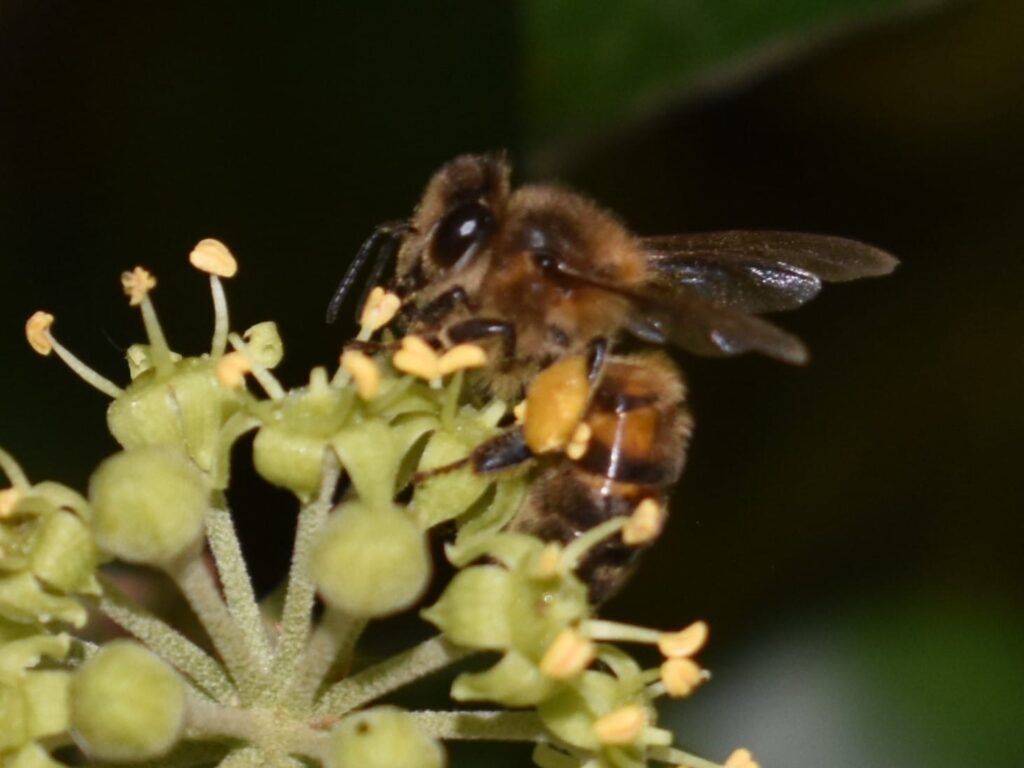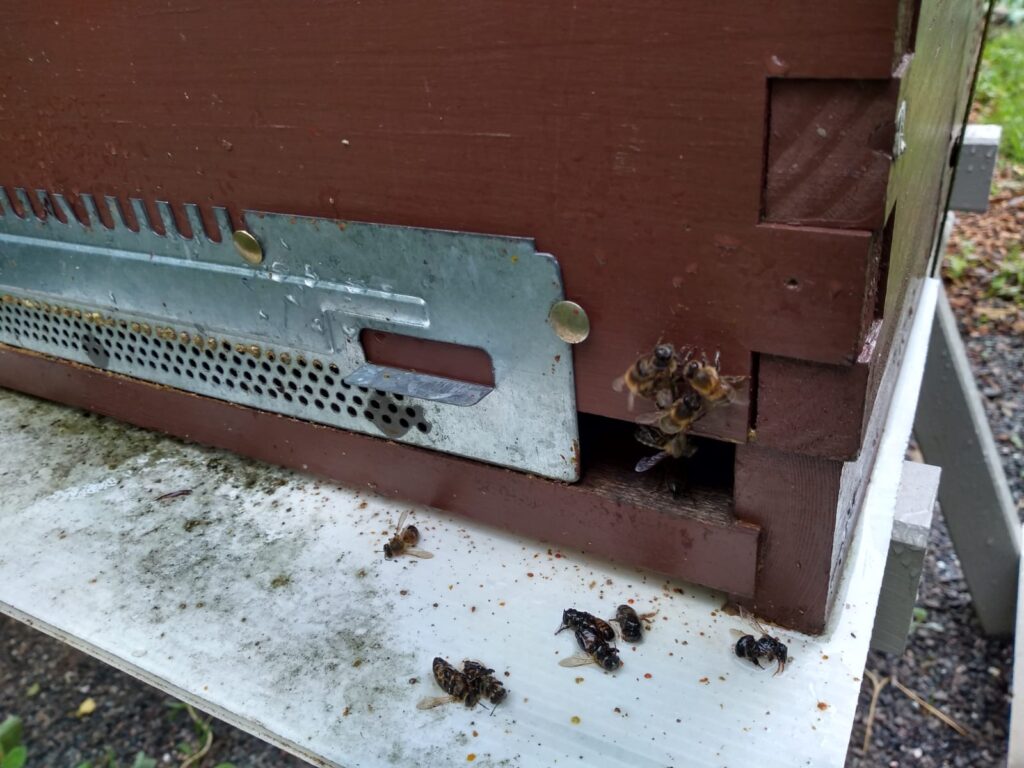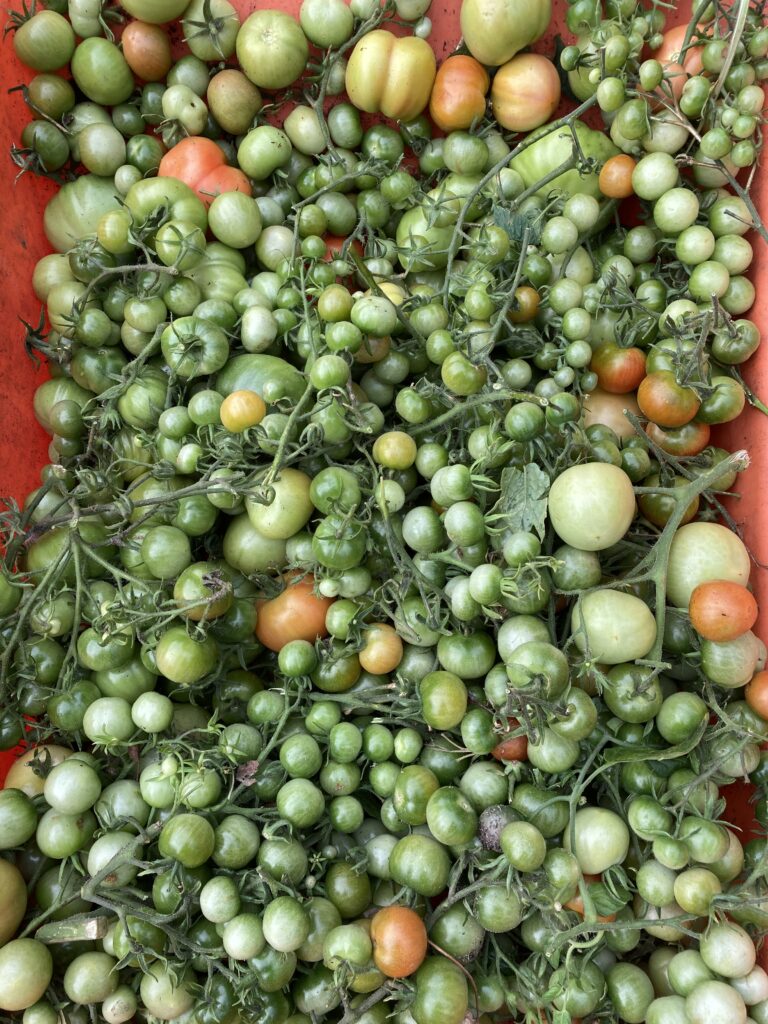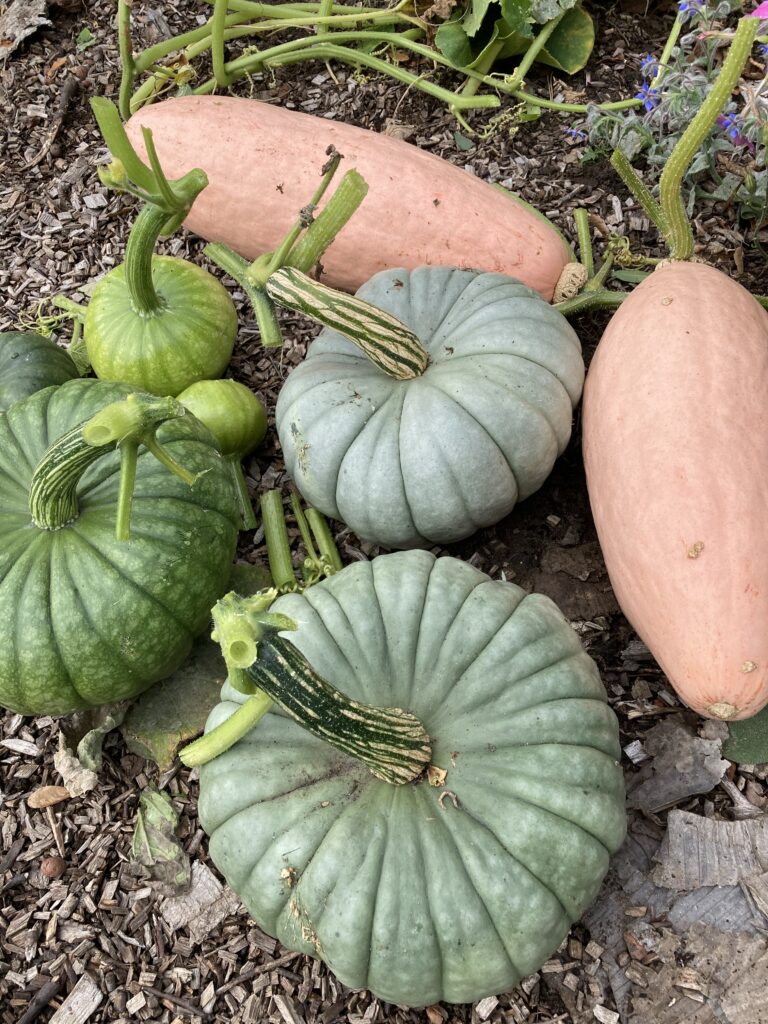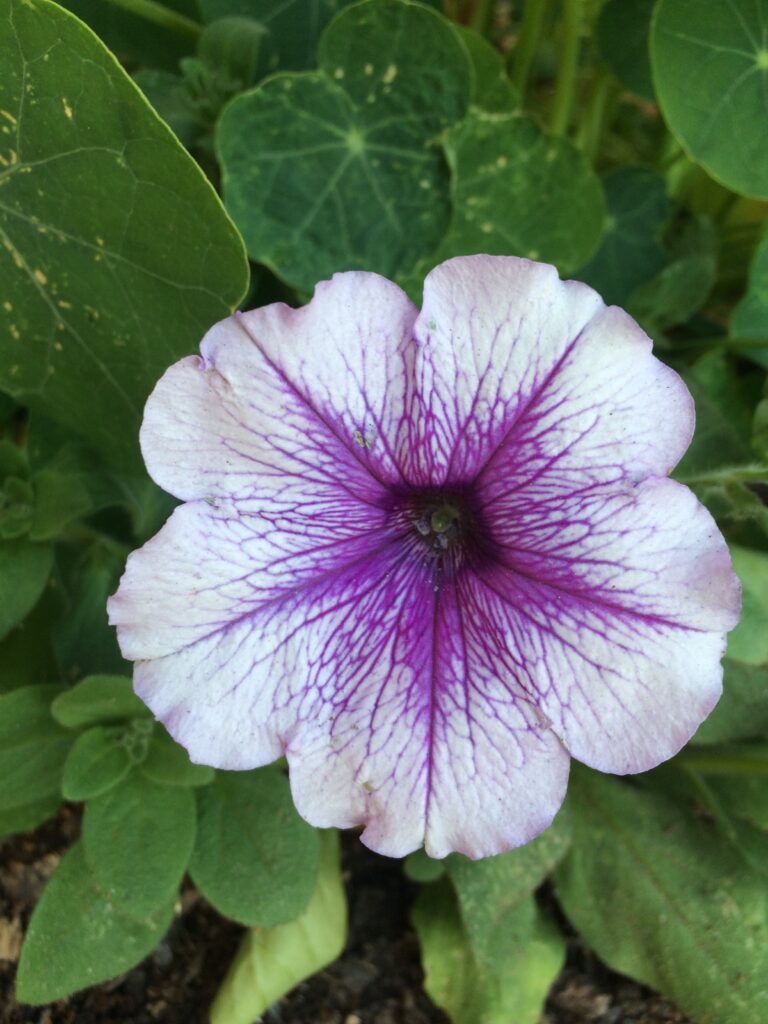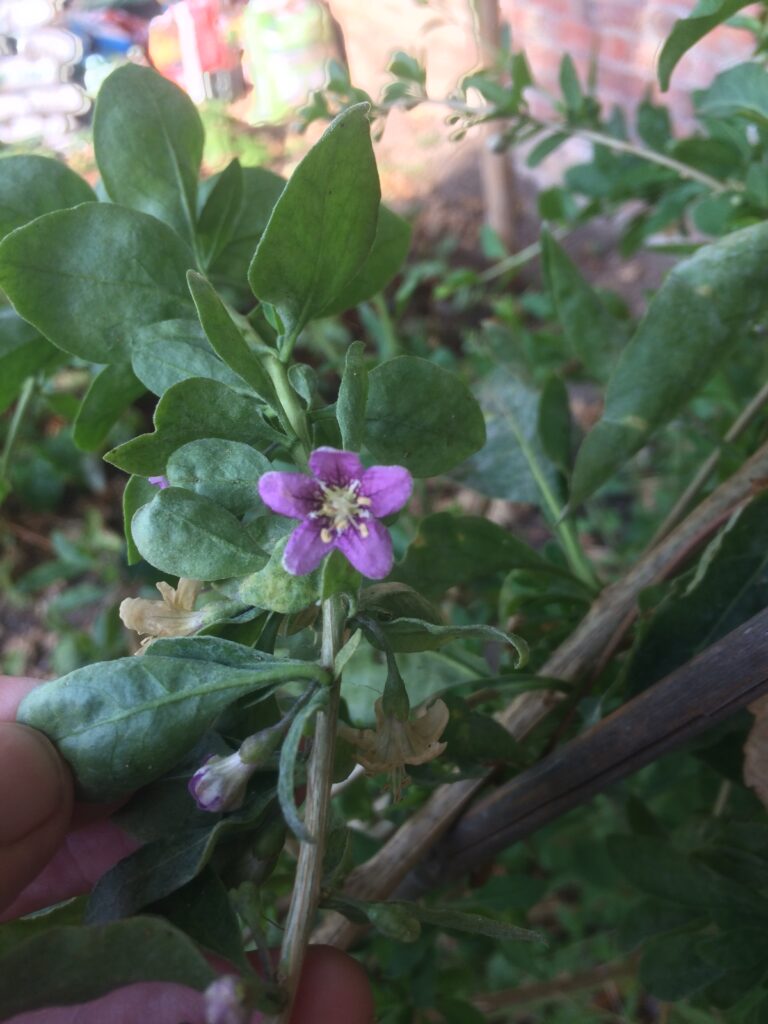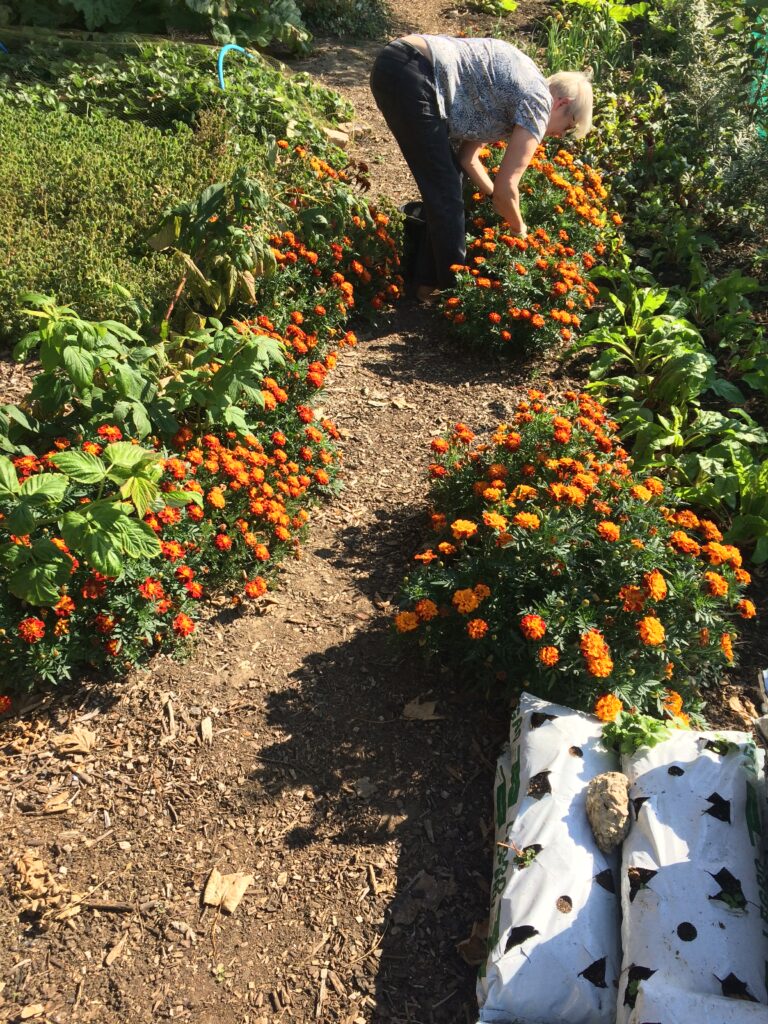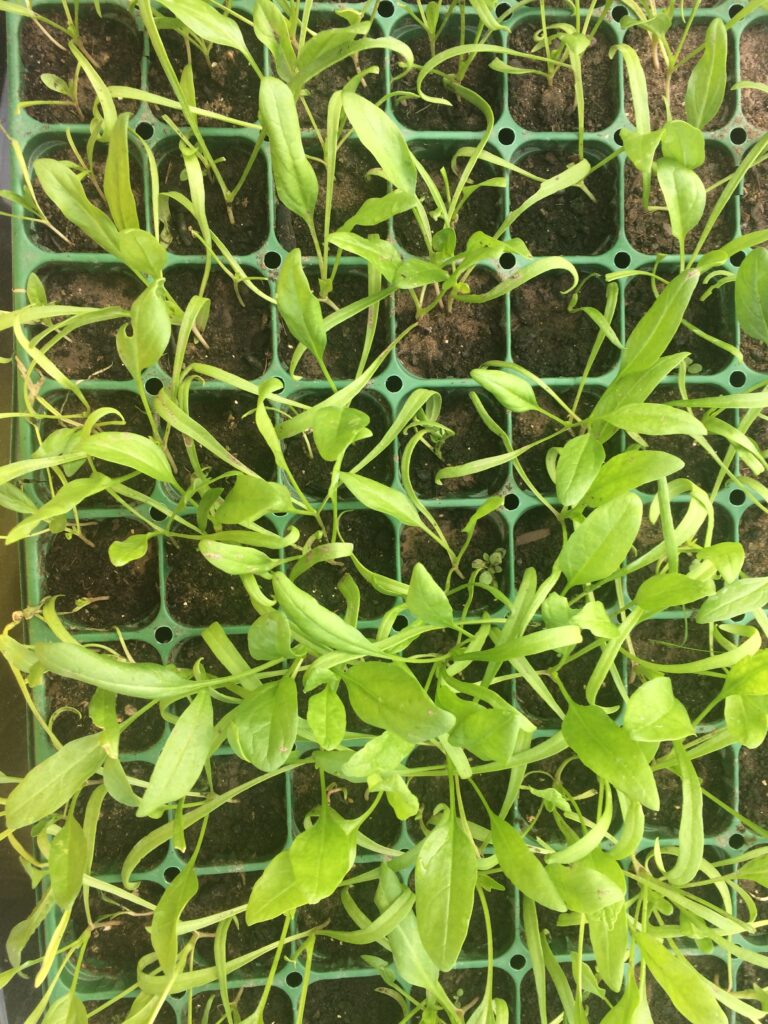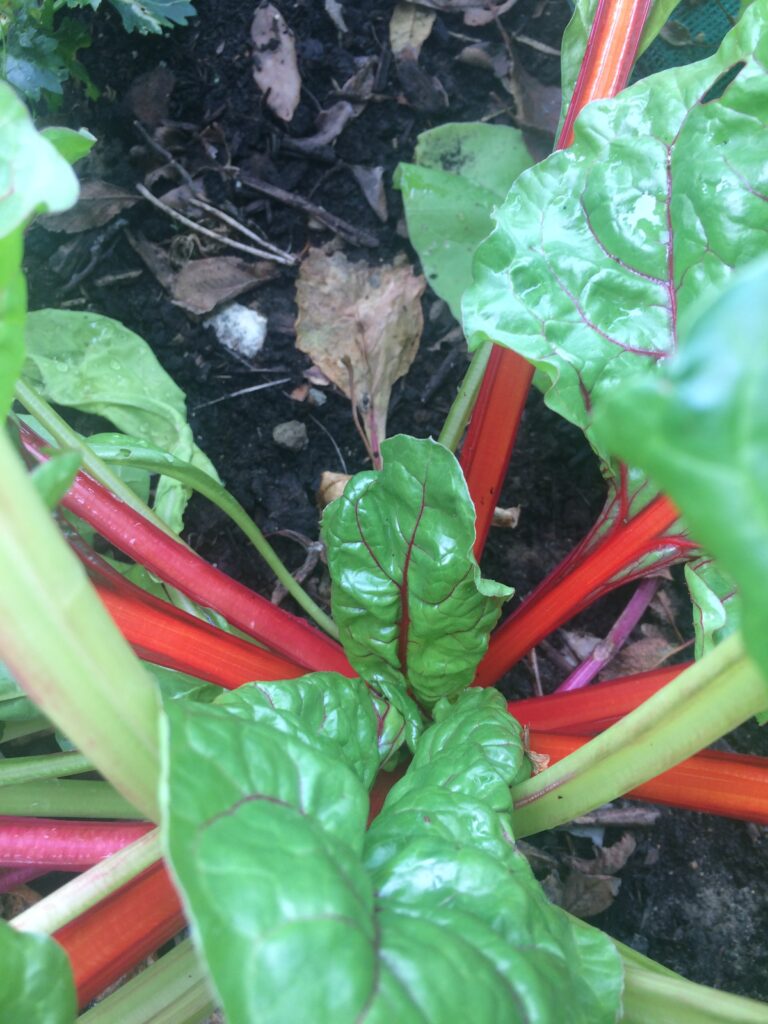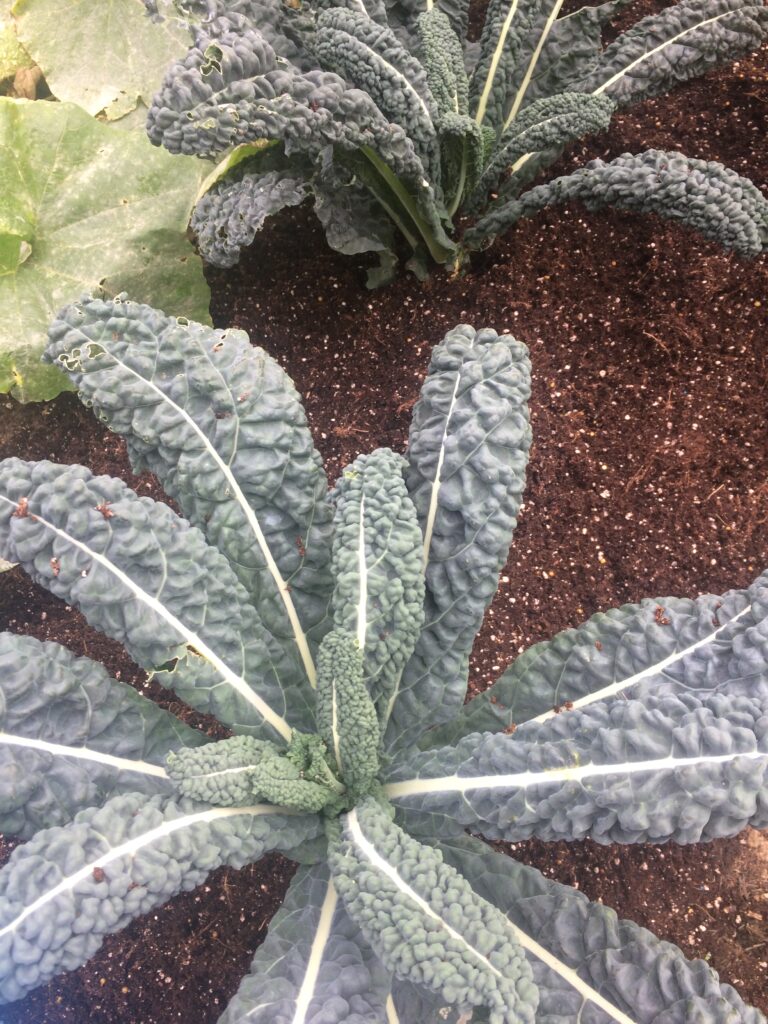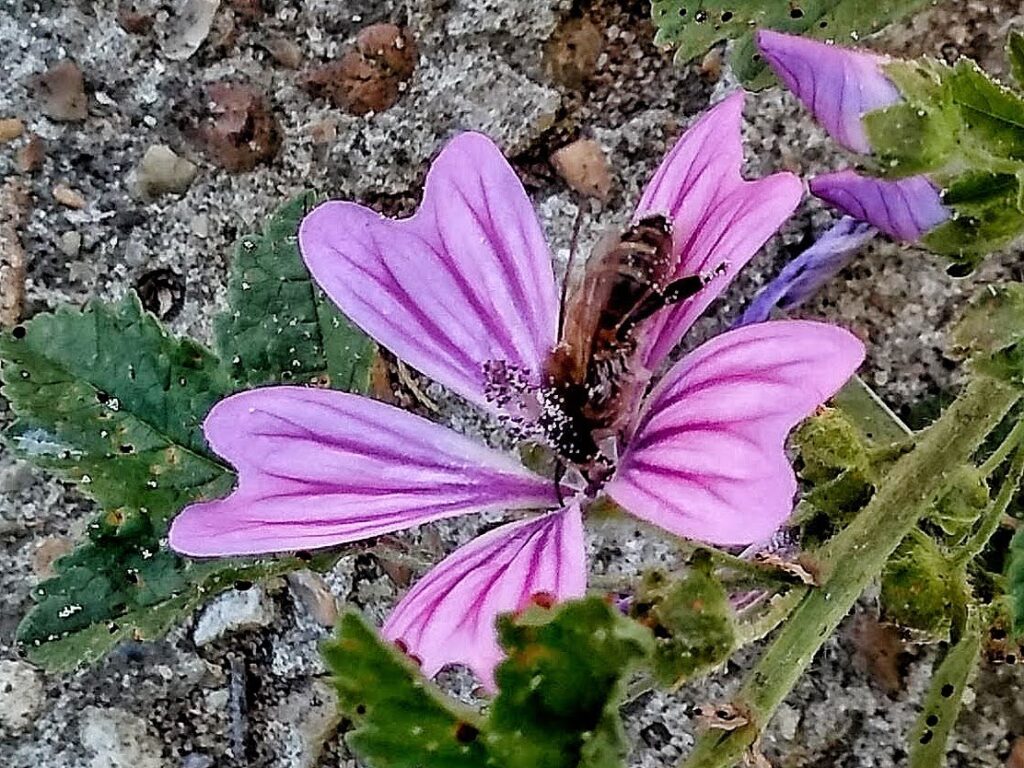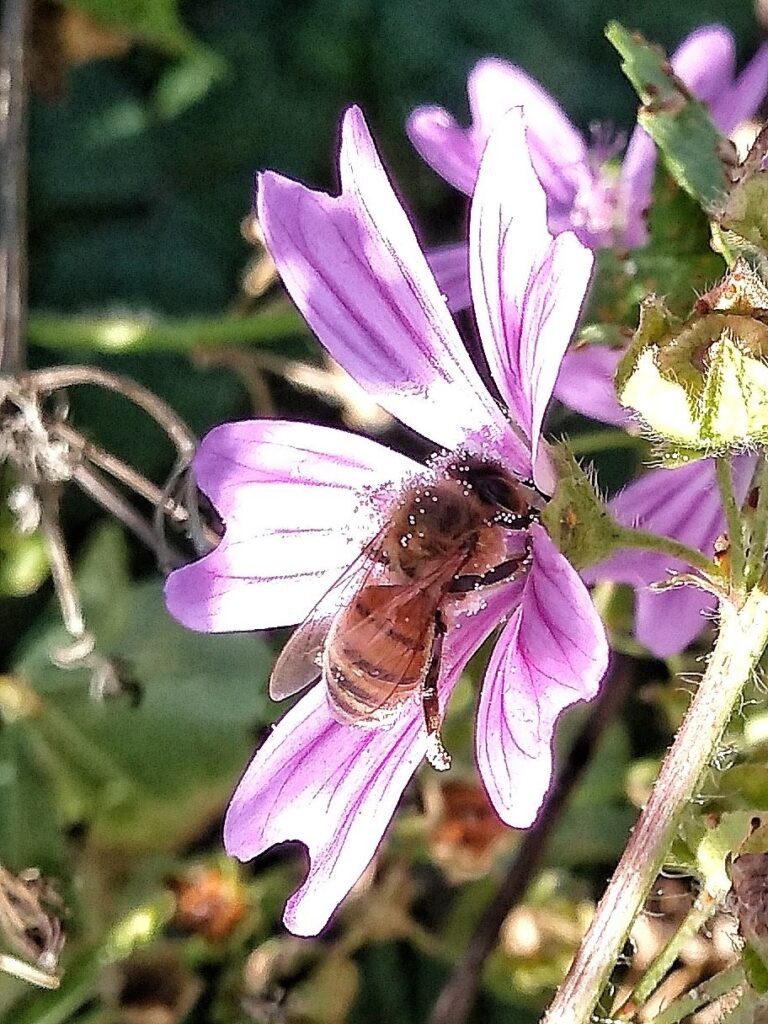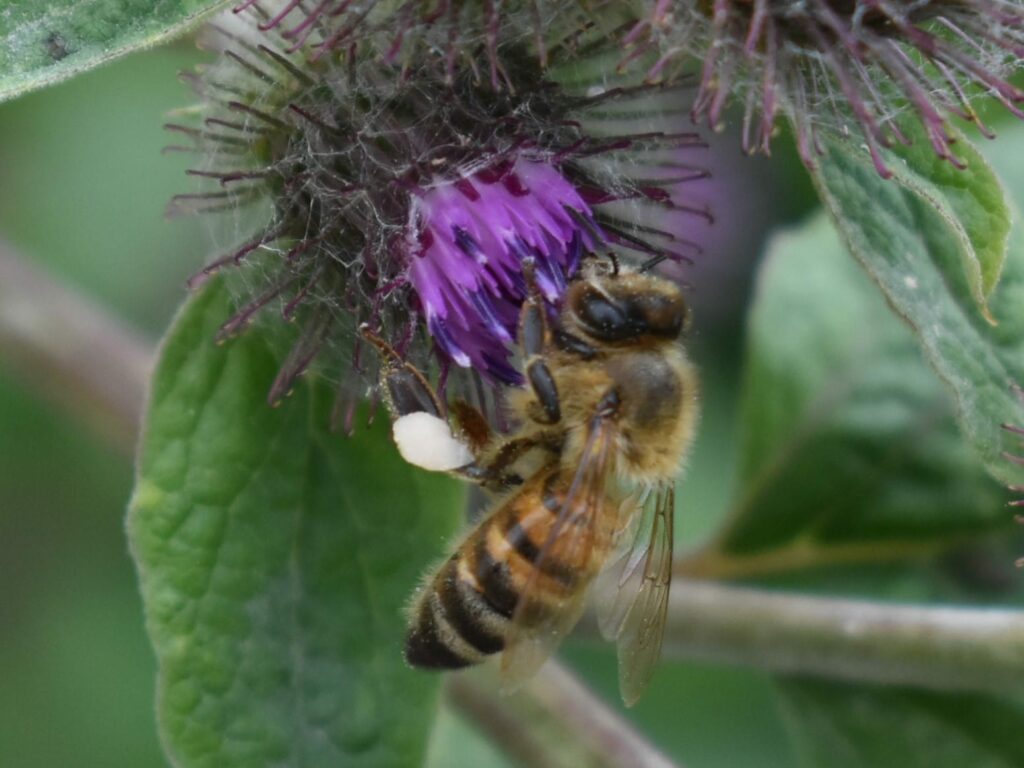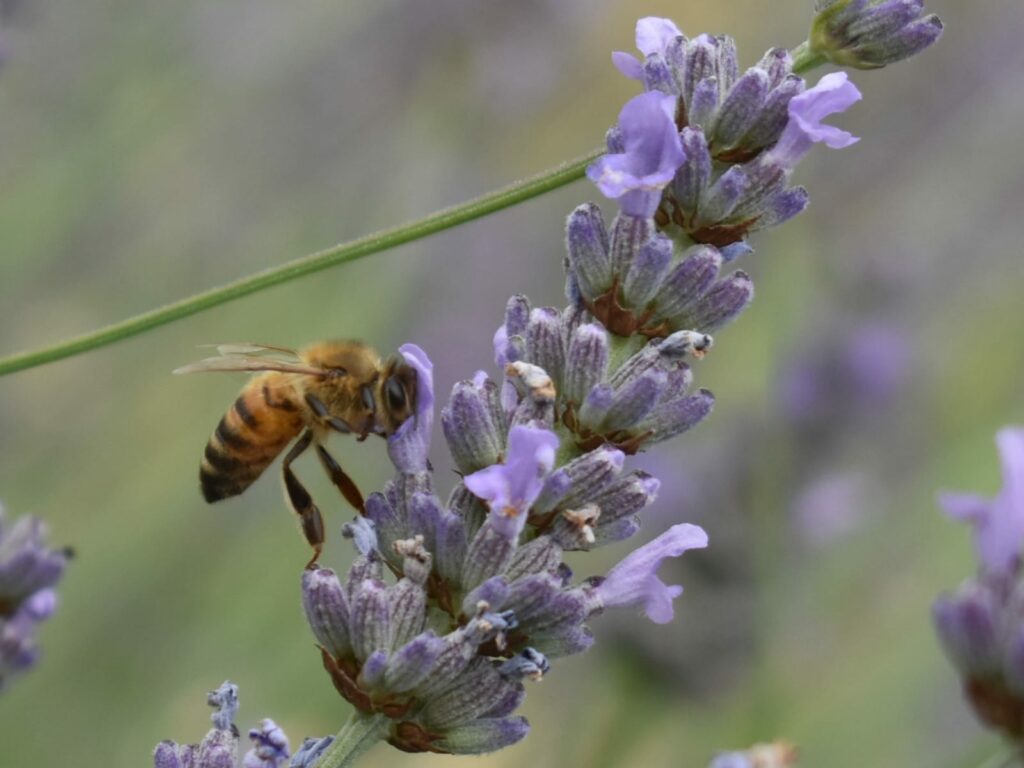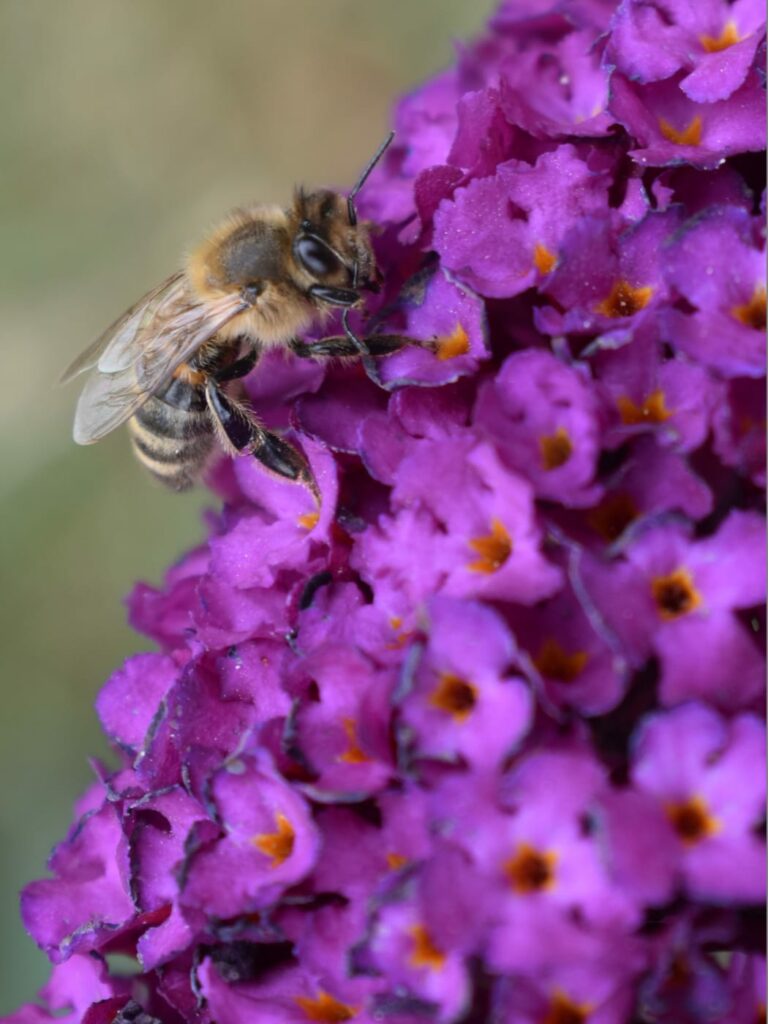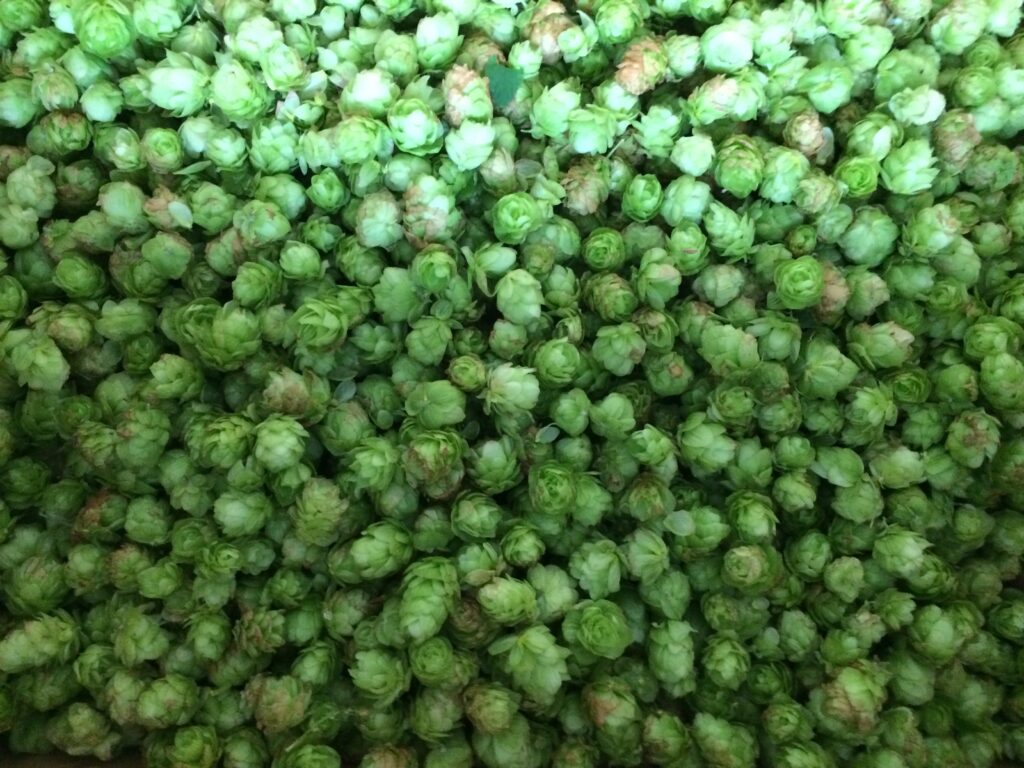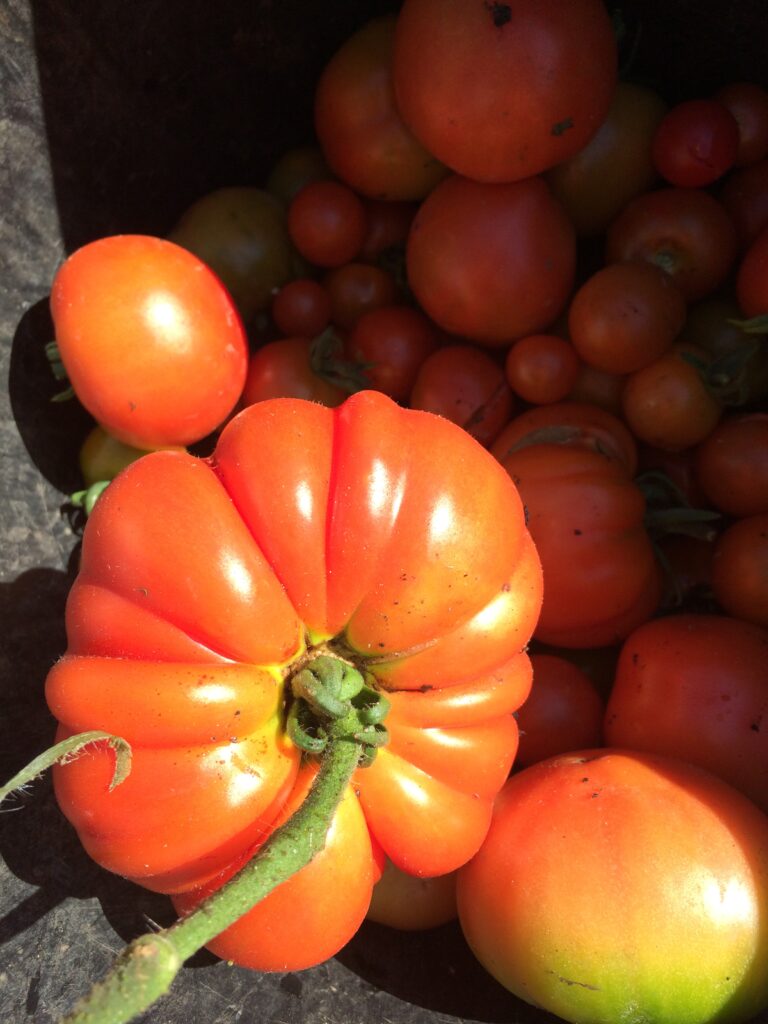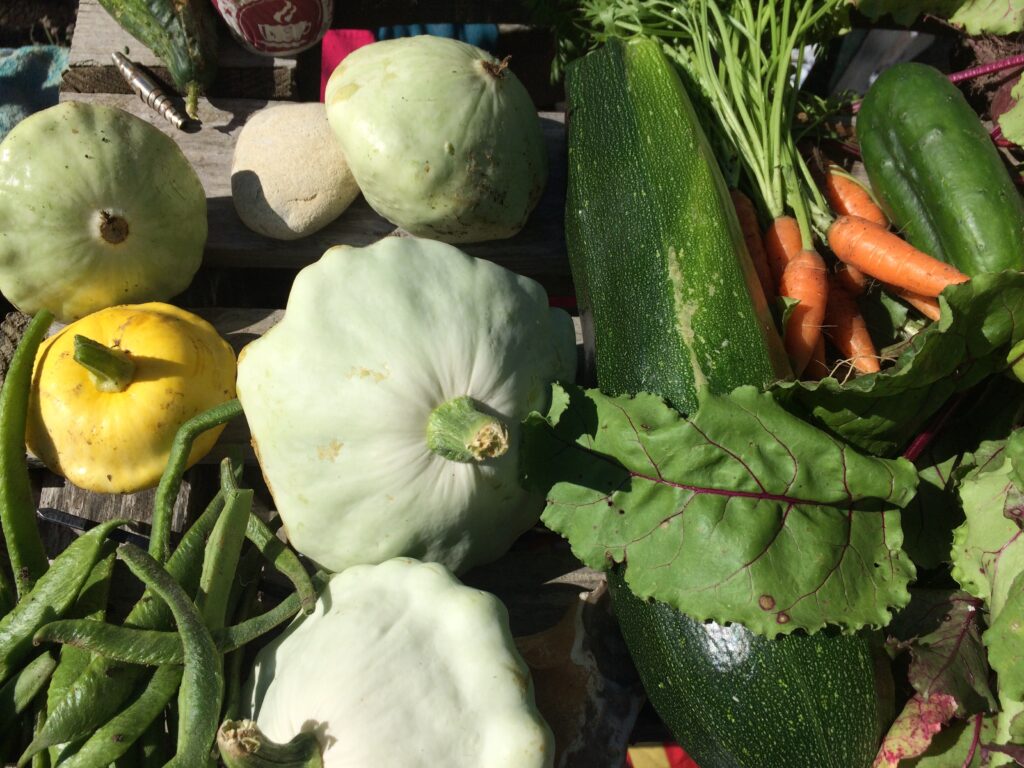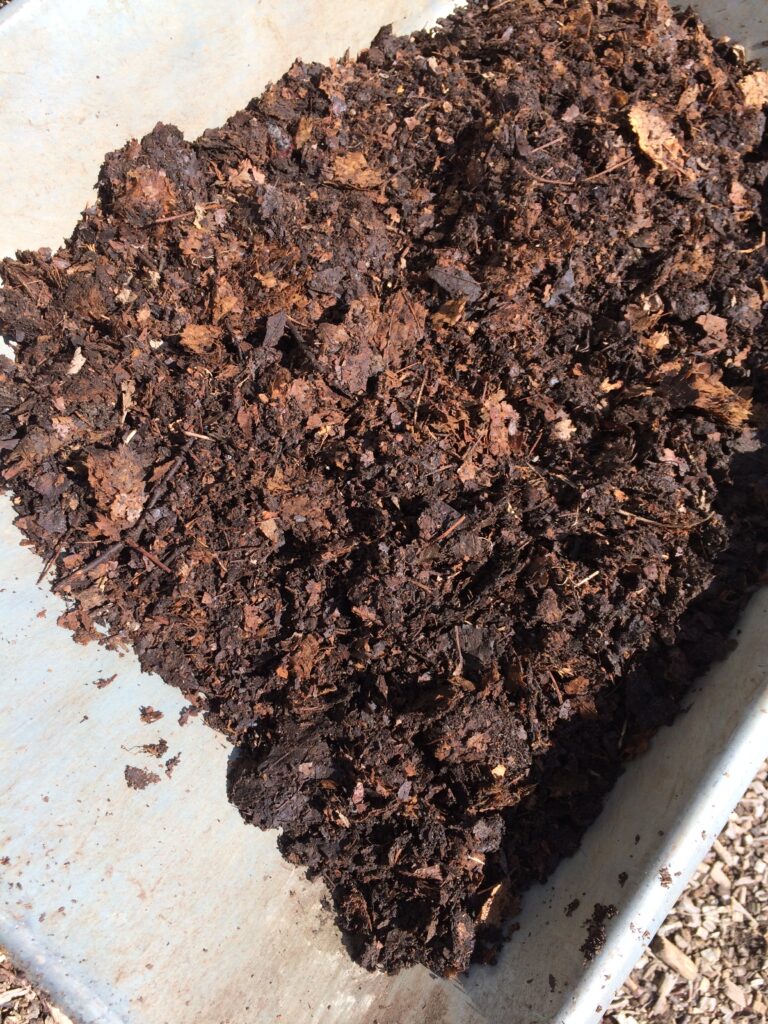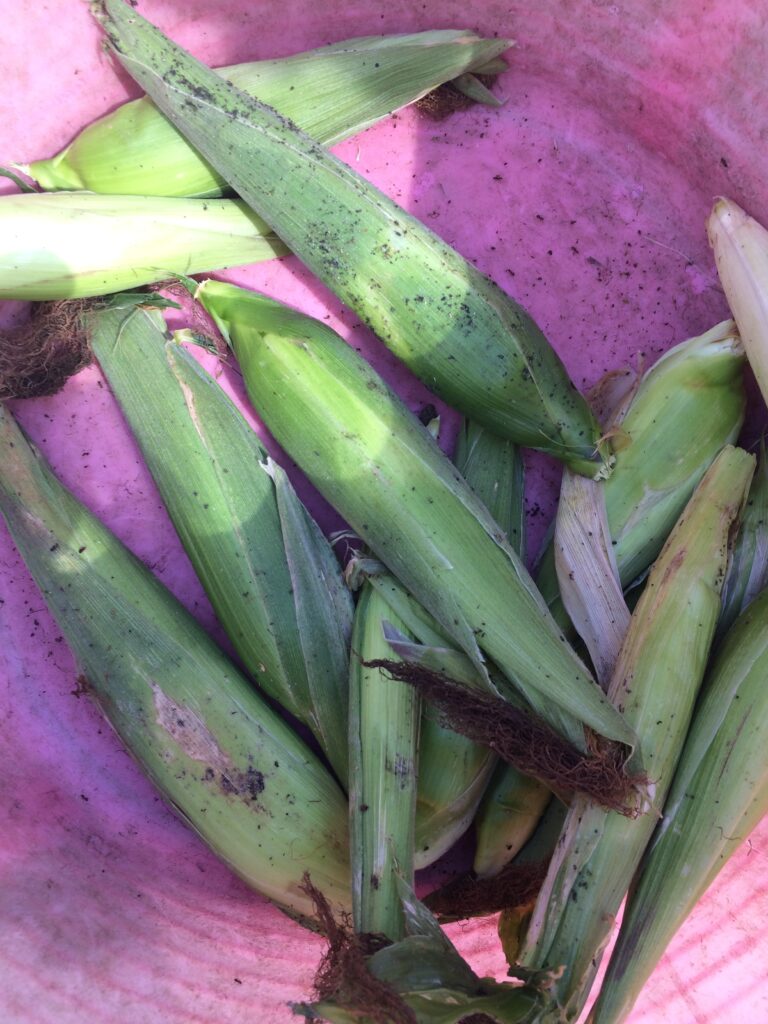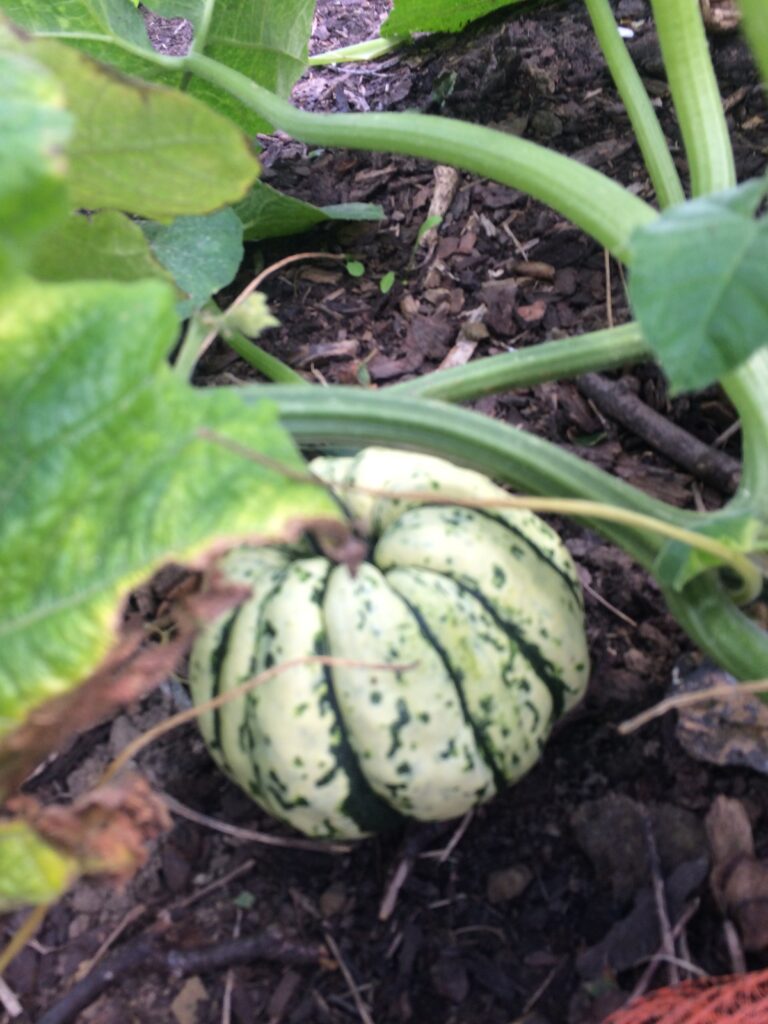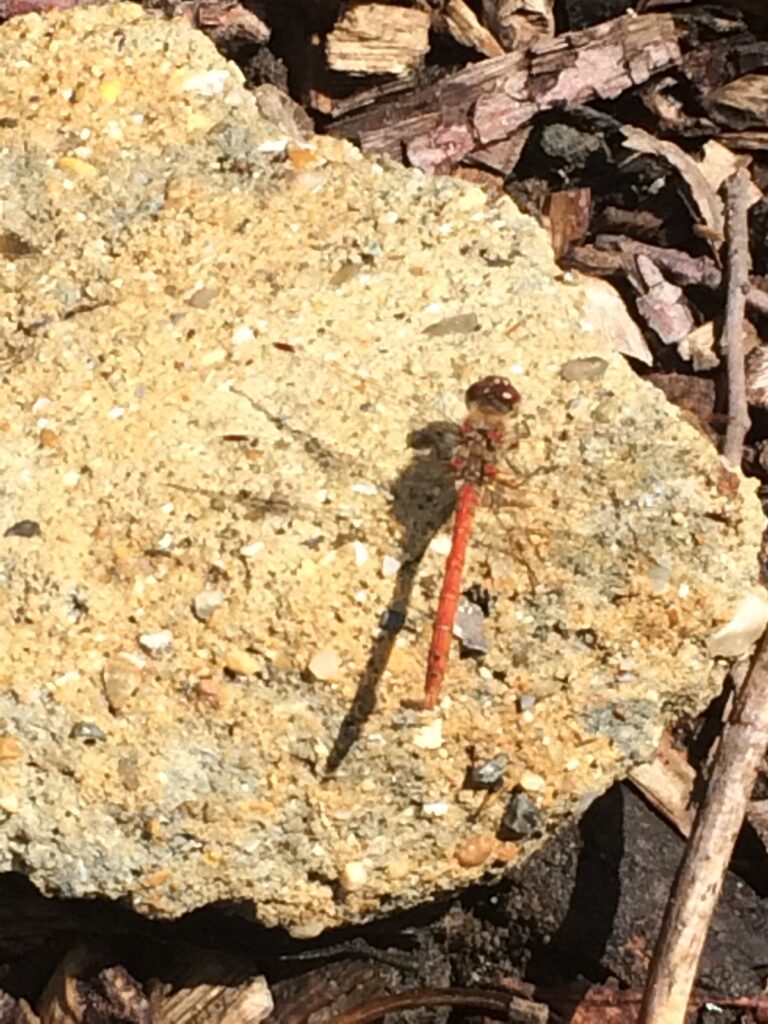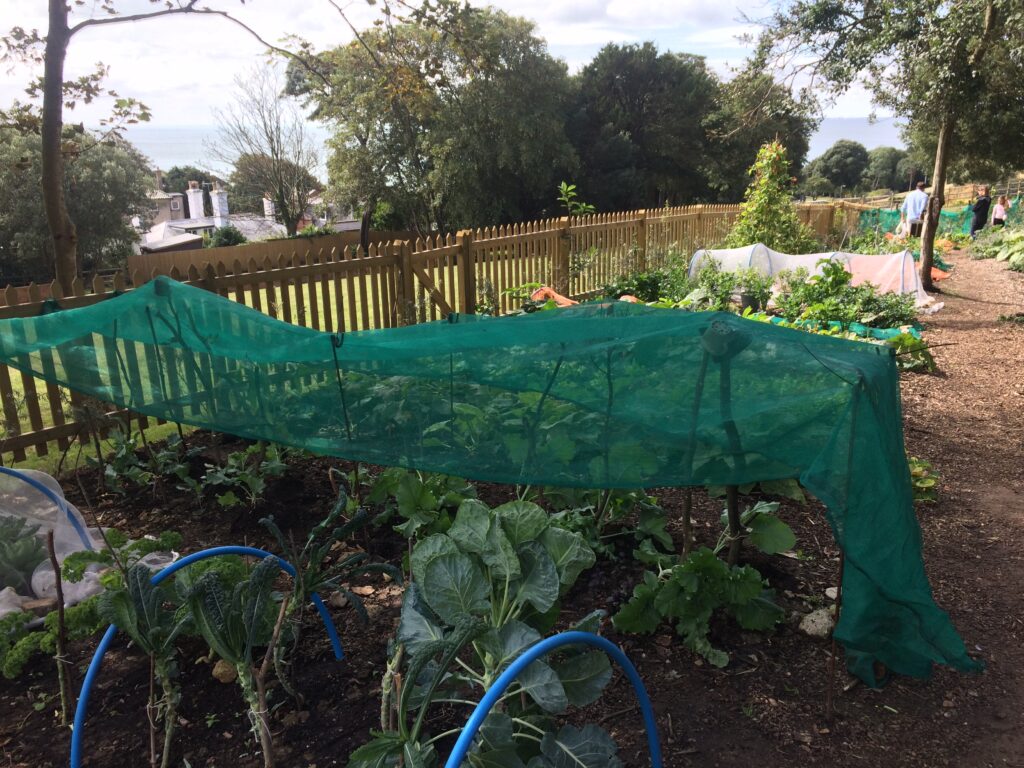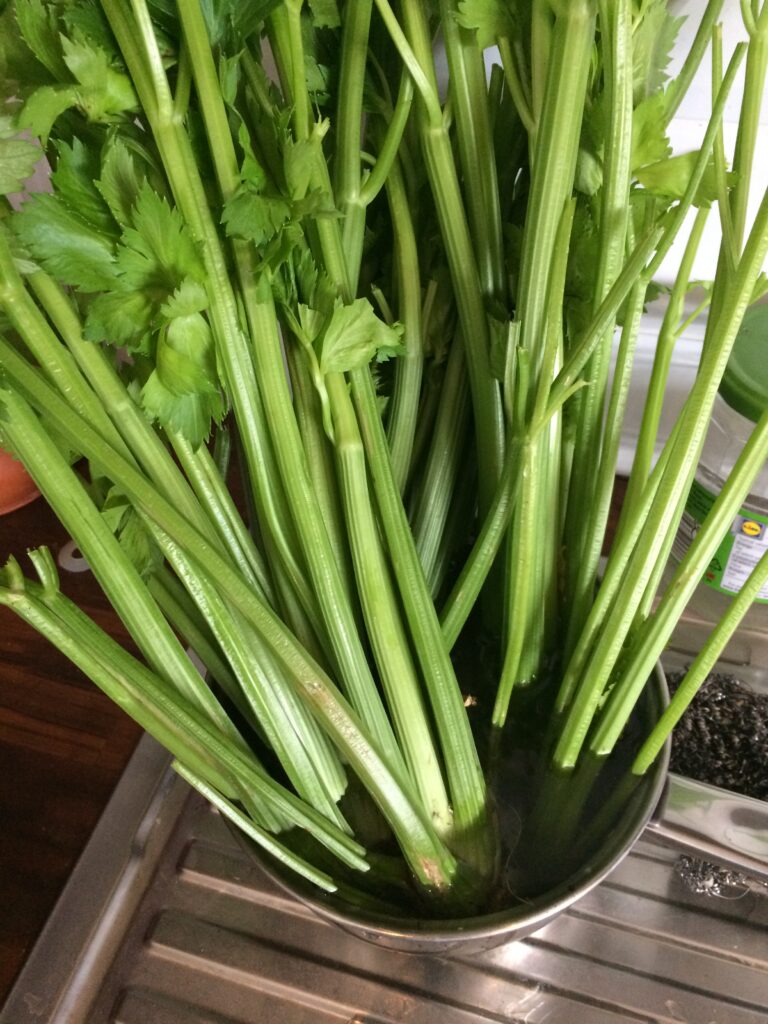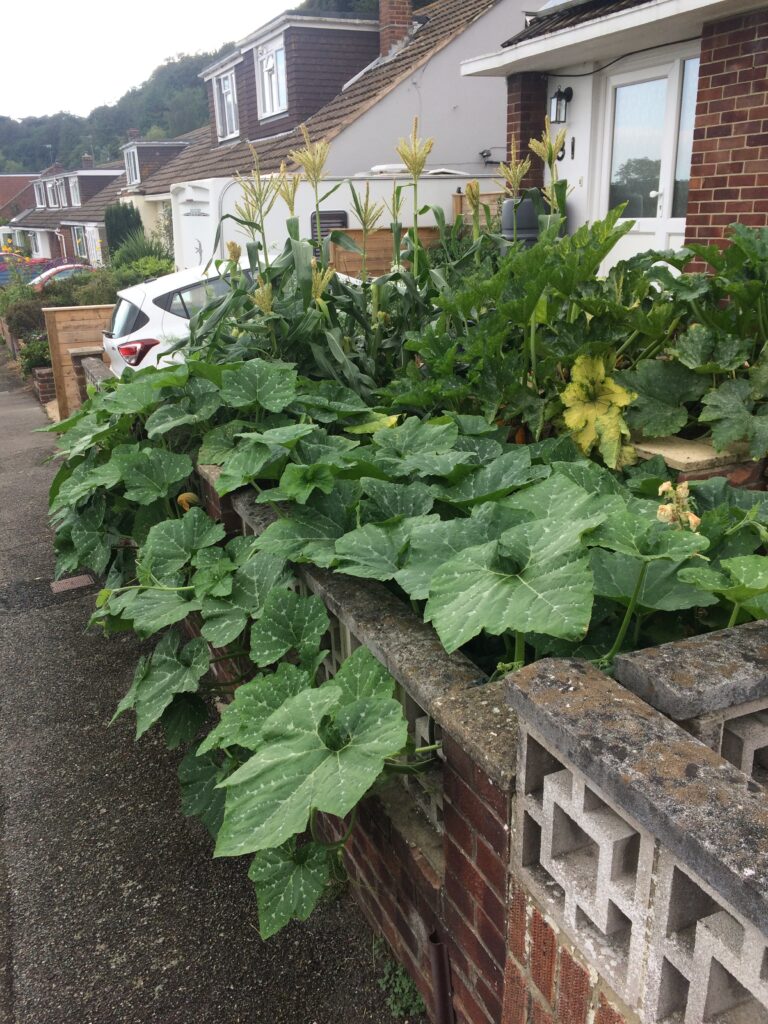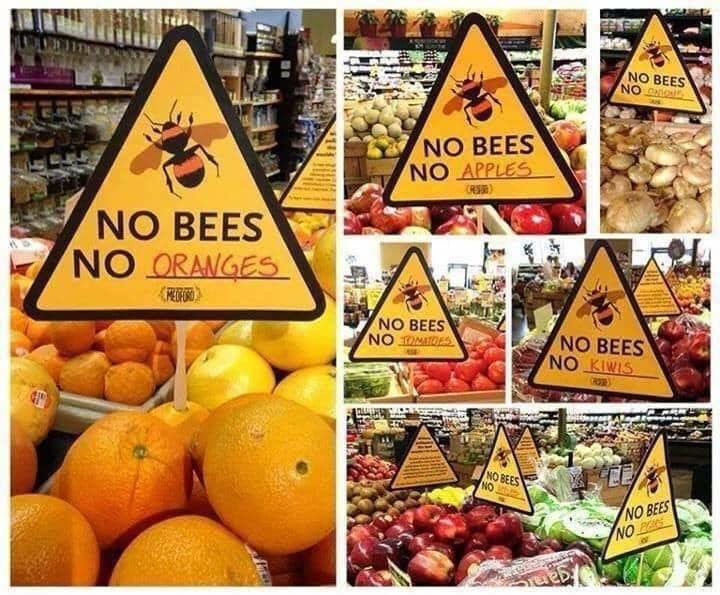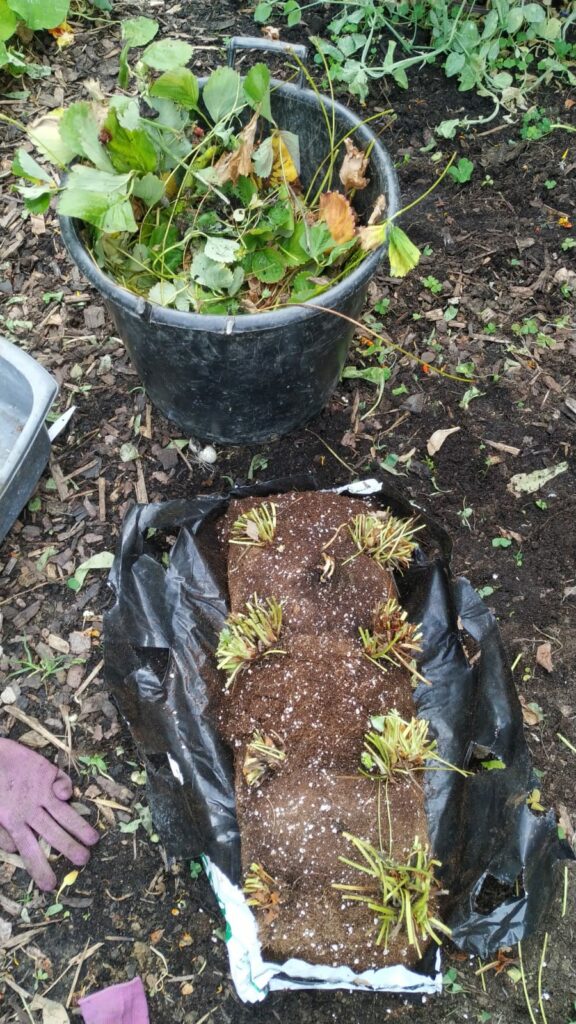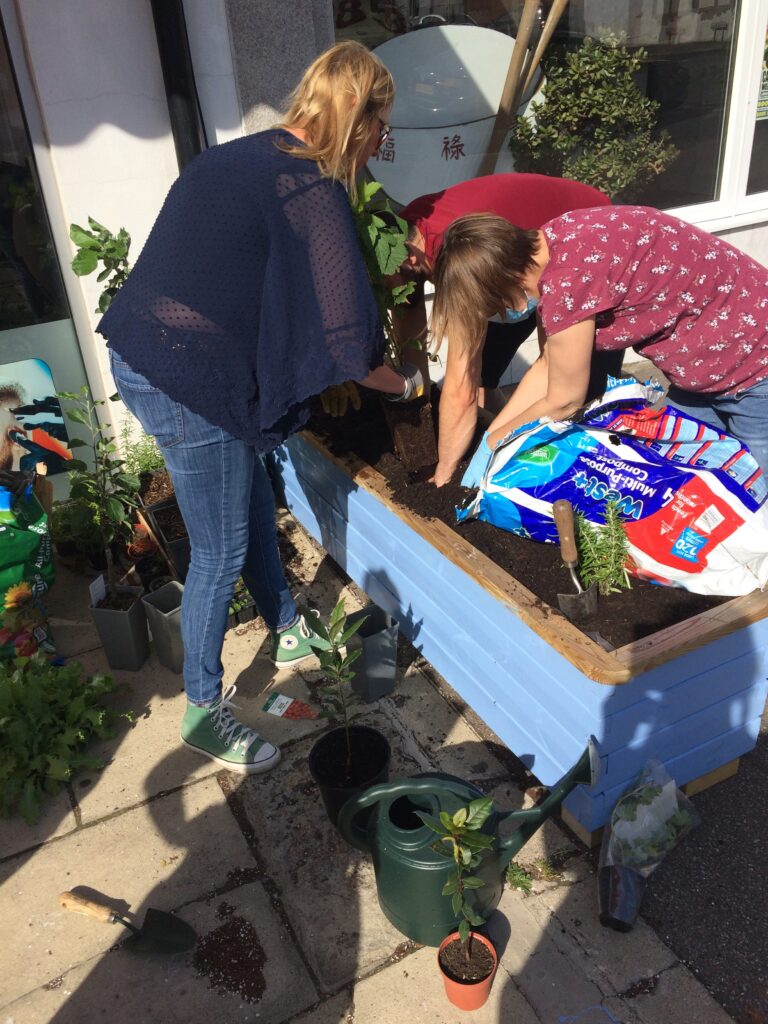The clocks have gone back this Saturday. Daylight hours are reducing fast as time goes on, but there is an abundance of free food out there if you are a forager, and apparently this year is a ‘mast year’ which is a superabundance that occurs every five to ten years. The trees synchronise their most productive years, giving so much fruit and nuts that the animals can never eat them all, and there is the best chance for new saplings to establish themselves. Apparently this is an evolutionary tactic that happens with some insects and animals too. Nature is just amazing! We are inundated by sycamore seeds again this autumn and are doing our best to pick up as many of them as we can with the leaves, or in the spring we will have a forest starting to grow. We certainly had experience of that this year, and had to put the hoes to good use. If any of the saplings get a hold, the roots go down very deep.
Exciting news of this week is that we have had a delivery of a couple of bottles of beer from the local Hythe brewery Hop Fuzz made with the hops from the Hythe Hops scheme, and so contains some of our own grown hops. Both bottles were put into a lottery and were won by two of our gardeners, Julie and Rosie. In the photograph below of the two bottles, you can read on the label that the brew is made with Hythe hops from ‘a team of interested people from the local community who together, want to grow hops and turn them into beer’. Some of the proceeds also go towards supporting the local bumblebee conservation trust. More brews from Hop Fuzz and Docker breweries will be happening before Christmas, and will be appearing in bottles and cans somewhere near you.
Docker brewery made another delivery of spent hops to our compost bins this week, and very glad we are to have them. The smell coming from the bins was something wonderful for a change. We are investing in another stacked wooden compost bin so that we can continue to make even more ‘black gold’, the most important bit of the garden that nourishes all the fruit and vegetables.
Rain was very much the feature of this week, which completely washed out our Wednesday meeting and half of Saturday too. However we got broad beans and autumn peas sown, and the winter purslane got planted. Winter purslane or claytonia is very rich in vitamin c and prefers to grow in the winter months. We shall see if we like it enough to make it a regular feature.
What’s next?
- Finish the wood treatment on the new and old compost bins
- Sow a few more broad beans
- Are we going to net this pond?
- Order the fleece
- Dig up strawberry plants
- Move herbs to herb garden area

Foraged sweet chestnuts from the park 
Hop Fuzz beer from the Hythe hops scheme 
Planted winter purslane 
Our certificate from RHS is on show 
Tiny Brussel sprouts starting to form


